Features
‘Ocarina of Time 3D’ – Good Game Design Doesn’t Age

“Time passes, People move. Like a river’s flow, it never ends.”
Everything shows its age, but good game design is good forever. The Legend of Zelda: Ocarina of Time could release in any generation and still resonate with a massive audience. An epic spanning the course of seven years, audiences become the Hero of Time as they fight to save Hyrule from an apocalyptic future. Ocarina of Time’s design philosophy is timeless, to the point where virtually all modern 3D games build off the foundation that the first 3D Zelda set. It was Super Mario 64 which ushered in the advent of high-quality 3D gaming, but Ocarina refined 3D to near perfection. Critics in 1998 heralded The Legend of Zelda: Ocarina of Time as the future of gaming, and rightfully so. Nostalgia has a way of making us misremember the past as greater than it was, but Ocarina of Time really is that good– a sentiment embodied perfectly by the game’s 2011 3DS remake.
In reference to Ocarina of Time 3D’s development, Shigeru Miyamoto– Ocarina of Time’s original producer– specifically wanted to avoid remaking the game too soon. Considering the impact Ocarina of Time had at release, it was only understandable Nintendo wanted to ensure any remaster or remake was given similar fanfare. Of course, Ocarina of Time was never going to break new ground twice, but it had earned a level of respect where any attempt at fixing what wasn’t broken would need to be well justified. For Miyamoto, it was only until the Nintendo 3DS’ stereoscopic 3D was a reality where he felt comfortable producing a proper remake. For Ocarina of Time to be revisited, it would need more than just a modern coat of paint. Stereoscopic 3D allowed for Ocarina of Time 3D to not only recapture the thrill of stepping foot on Hyrule Field for the first time but make the experience all the more immersive.
Although even Shigeru Miyamoto now considers the original game’s graphics rough-looking, there is an inherent stylization to Ocarina’s visuals that keeps it aesthetically pleasant two decades after the fact. There has always been a charm to the early 3D aesthetic, and Ocarina of Time’s is right up there with Final Fantasy VII as a noticeably vintage game that looks nice to the trained eye. At the same time, the Nintendo 64 could only showcase so much detail, and Yoshiaki Koizumi’s environmental concept art makes it abundantly clear what was always supposed to be a part of Hyrule but couldn’t be included due to technical limitations.
A washed-out color palette helps convey the Great Deku Tree’s age in-game, but his N64 model lacks the detail of his concept art– the brighter color palette and the livelier expression. Place Ocarina of Time 3D’s Great Deku Tree next to Koizumi’s original art, and it’s as if the Kokiri Patriarch has leaped right off the page. Likewise, Link’s original N64 model doesn’t quite match Yusuke Nakano’s character art for him– as a child or an adult. Between his lack of earrings and missing bandolier, in-game Link is really an approximation of what Nakano envisioned for the character. In contrast, Link’s 3DS model isn’t missing a single detail. Ocarina of Time 3D’s CG aesthetic is a natural translation of Koizumi & Nakano’s art direction. In-game models resemble their concept art shockingly well, and the upgrade in visuals helps give Hyrule & dungeons the greater detail they were always supposed to have.
Without stereoscopic 3D, there’s no justification in remaking Ocarina of Time. Entering Hyrule Field for the first time was a momentous occasion in 1998, and through the 3DS, Ocarina of Time 3D is able to recapture a modicum of that feeling. As Link makes his way to Hyrule Market, those who have 3D enabled will make witness to a video game sunset unlike any other. The sun’s glare slowly pierces through the screen, a beautiful ripple of light descending as night falls. The Stalchildren come out to play soon after, but those who look up will be greeted to a sky peppered with bright stars. It’s not exactly comparable to experiencing a world like Ocarina’s for the first time in 1998, but the 3D ensures there is still a unique weight to leaving Kokiri Forest for the first time. In reinforcing the game’s atmosphere, Ocarina of Time 3D honors the importance of Hyrule Field in the context of the medium.
The sun’s glare on the screen puts it all into perspective why Miyamoto wanted to wait to remaster Ocarina. By framing the remake through the immersion added by stereoscopic 3D, Ocarina of Time 3D keeps its original game design intact while avoiding a superficial remake that simply updates the graphics. 3D is an optional feature, but everything in-game plays off 3D remarkably well– to the point the uninformed might even assume OoT’s was designed with stereoscopic 3D in mind. The 3D effects smooth out the visuals and make them crisper, giving Hyrule even more visual detail. Colors pop all the better, making areas like the Sacred Realm and Great Fairy Fountains stand out. NPCs more prominently fill their physical space, lending them a more real presence that incentivizes the player to speak to them more often. Doing so reveals that Ocarina of Time leaves nothing to dumb-luck, filling the script with subtle direction throughout.
Stereoscopic 3D makes Ocarina of Time more immersive, and deeper immersion allows for us as an audience to piece together what exactly makes the game tick. Complete freedom to explore, caring attention to detail, and strong level geography serve as reminders to the timelessness of good design philosophy. Play through any dungeon with 3D enabled and see just how well-implemented verticality is in the level design. Diving through the Great Deku Tree’s web has a greater impact. Scaling Ganon’s Tower as organ music plays is even more foreboding. Even combat looks better in 3D, with Z-Targeting’s letterbox effect creating visually dynamic battles that are basically theatre in motion.
Ocarina’s freeform gameplay loop is reflective of its era without showing negative signs of age. If anything, Ocarina of Time’s relative age makes it look better next to modern AAA games. Comparatively small as it may be, Ocarina’s approach to game & level design is almost a lost art. Dungeons paced entirely through visual direction and rhythmic combat that virtually all action games owe their existence to make Ocarina of Time a compelling playthrough in any context. OoT 3D simply trims what rough edges there were to make the game’s strengths all the more noticeable.
“A feeling in the heart that becomes even stronger through time…”
Ocarina of Time 3D allows us to appreciate what made Ocarina revolutionary in 1998, with game design that’s aged like wine, but OoT did have its own technical and graphical hiccups. As mentioned, the limited power of the Nintendo 64 meant that Hyrule couldn’t be as visually detailed as the environmental concept art depicted. More pressingly, the game ran at a rather uneven 20 frames per second, which is as playable today as it was in ‘98, but slowdown naturally hurts any game. Ocarina of Time 3D stabilizes the frame-rate to a smooth 30 fps without making any major gameplay changes. Or any noticeable changes whatsoever. On a design level, Ocarina of Time and Ocarina of Time 3D are basically 1:1. When taking into account how many remakes tweak combat, it’s worth noting.
This is game design not only indicative of when OoT was developed but of Nintendo’s talent at the time. There are innovators & geniuses in every generation and to brush off a work of art based on when it was created ignores this very universal truth. Ocarina’s dev team was arguably at the collective height of their careers, at an incredibly important turning point for video gaming as a medium. The level of thought and design work that needed to be put into Ocarina of Time was frankly unprecedented, but it’s the sheer quality of the final product that actually makes it timeless– not the fact Ocarina of Time was once one of a kind. Regarding the nature of Ocarina’s success, Miyamoto said, “The heart of Ocarina of Time lies in what the individual designers composed with the elements produced by the person in charge of writing the story.” Ocarina of Time 3D respects this fact and doesn’t change the core design as a result.
At the same time, OoT 3D naturally comes with its modernizations– particularly when it comes to control. Super Mario 64 was designed with the Nintendo 64 controller in mind, to the point where using an N64 controller is still the definitive way of playing through the game. Mario’s mobility is specifically designed to be as comfortable as possible with the N64’s standard controller, whereas Ocarina of Time’s controls are a bit more forward-thinking. They were still clearly designed with the N64 controller in mind, but controlling Link isn’t half as involved as Mario, allowing OoT’s controls to translate to newer platforms with greater ease than SM64. Ocarina of Time is actually strengthened by leaving the N64 controller behind.
Thanks to the 3DS’ touch screen, Link can now equip four items at any given time– not including his Ocarina which now has its own dedicated item slot. This naturally allows for more combat variety as players don’t have to waste a slot on the Ocarina, but it’s easy to take for granted just how well the 3DS’ face buttons replace the N64’s C-Buttons. Placed above the A and B buttons on the N64’s face, the C-Buttons keep the transition from swordplay to Link’s other equipment not as intuitive as it should be. Not so with OoT 3D where the face buttons are home to Link’s sword and two of his item slots. It might seem like a superficial difference, but it can’t be denied how much more fluid combat is without the restrictions of the Nintendo 64’s controller.
Considering Ocarina of Time 3D is the kind of remake that goes so far as to retain bugs present in the original N64 release, one might be correct to assume Grezzo’s MO when developing the remake was to simply add a deeper layer of immersion without compromising the game design. All the same, sensible changes were made in two key areas where Ocarina of Time was arguably always needing them: aiming and the Water Temple. Now, it’s important to clarify that OoT’s first-person aiming isn’t bad, but it’s also not that intuitive. The blue strip on Link’s bow is a fine enough indicator of how to aim, but first-person controls were always too stiff.
Although stereoscopic 3D was meant to fundamentally change how we play Ocarina of Time, gyroscopic aiming arguably fulfilled this goal for a broader audience. 3D is off-putting by design (to the point Nintendo released a 3D-less 2DS,) but Ocarina of Time 3D’s gyroscopic aiming is too fluid to ignore. The gyroscope gives players access to perfect aim based entirely off their own physicality. One could even argue aiming goes from too stiff to too smooth, allowing Link to snipe enemies from afar with ease– but that goes hand in hand with being the Hero of Time.
In regards to the Water Temple, needing to equip & unequip the Iron Boots via the menu slows the pacing of an otherwise strong dungeon, which makes it difficult to remember important visual details. The Water Temple is fixed as simply as the Iron Boots being made into a regular item instead of a piece of gear like Link’s Tunics. Now mappable to buttons and equippable in-gameplay, the Iron Boots allow the Water Temple to move at a much faster pace. What was once Ocarina’s low point arguably becomes one of its highs.
Designed around a water-raising & lowering gimmick, the Water Temple stood out as Ocarina of Time’s most notorious dungeon. Without a clear indication of where Link could toggle the water level, the Water Temple could very easily become confusing– in turn obscuring its mindful level design. The 3DS release remedies this by color-coding the three places where Link can adjust the temple’s water, making navigation far more instinctive. The dungeon’s layered floors are no longer a nuisance, now one of Ocarina’s better set–pieces. Water bridges a gap within the Temple’s level geometry that no other dungeon can lay claim to, and turning on 3D helps those important details stick out– the second floor alcove above where Ruto is met, the hidden basement under the central room, Link’s reflection vanishing from the water’s surface right before your showdown with Dark Link. It’s hard not to appreciate the Water Temple now.
As far as hardware specifics go, the 3DS’ dual screens clean the hud considerably. Ocarina of Time’s hud isn’t cluttered, but moving everything but the mini-map and the action button to the bottom screen is a fantastic touch. It’s almost necessary to make the most out of stereoscopic 3D, but even without the 3D enabled, it’s just nice to get a fuller picture of Hyrule. Being able to access Gear, the Map, and Link’s Item screen with the tap of a thumb is also a godsend compared to the Nintendo 64’s rather slow menu. There’s certainly a charm to Link’s old-school equipment screen, but the practicality of the 3D remodel is too good to pass up.
“I’ve been waiting for you, Hero of Time…”
Ocarina introduced concepts new for the time, but refined to a point where its roughest edges are well obscured. There’s often a notion in games criticism that the first try is just that, and all subsequent attempts will naturally improve on its predecessor. Taking technological advancements in mind, that makes sense for graphics, but not much else. A reductive way of looking at the medium, this mindset ignores not only the timelessness of strong game design, but that limitations often bolster art. It’s a train of thought that suggests the progression of art is linear, where new pieces of media are better than old– but classics are classics for a reason. No one writes Greek epics anymore, but to deny The Iliad’s literary merit and quality would be silly.
Ocarina of Time was Nintendo’s first real attempt at making a 3D epic, and it understandably isn’t as expansive as later entries like Twilight Princess or Breath of the Wild– but it’s something better: focused. Every aspect of Ocarina’s game design blends together to create one of Nintendo’s finest gameplay loops blending dungeon-crawling, sword fighting, & exploration with a master’s touch. Between solving puzzles and finding secrets, the gameplay is always fulfilling. Another large component of Ocarina of Time’s everlasting success stems from Miyamoto’s rejection of cutting edge graphics being a cinematic boon for the medium. “At the time, the phrase ‘cinematic game’ was used mostly in regard to graphics, but to me, that wasn’t what cinematic really meant. I thought what we should really be learning was how to use camera techniques to explain situations.”
Even if it doesn’t take a trained eye to see what Miyamoto is saying here in regards to in-game cinematography, Grezzo shines a spotlight on Ocarina of Time’s strong visual storytelling. Hyrule’s creation myth, in particular, is downright mesmerizing. The Golden Goddesses live up to their namesake as they soar through the skies with a heavenly grace; Hyrule’s geographic depth makes the region truly come to life alongside the Deku Tree’s legend; and the Triforce, in all its divine glory, looks just barely out of reach– as if it can truly be possessed by mere man. From every facet of the remake’s design, it’s evident how much attention to detail was given to ensuring stereoscopic 3D was more than just a gimmick, actively benefiting the experience. Yet the most remarkable takeaway is how fun Ocarina of Time remains.
Still, Grezzo deserves credit for making the most out of a feature few developers seemed to truly care for. The final boss fight has even had its skybox redesigned to better suit stereoscopic 3D, fundamentally changing the atmosphere, but allowing Ocarina of Time 3D to end on its own unique highpoint. More importantly, everything surrounding the final battle has been remade magnificently well. Link’s initial confrontation with Ganondorf looks spectacular in 3D– from the added depth found in the redesigned boss arena to more-detailed character models. Their clandestine tennis match is far more thrilling with tangible depth.
Between Ganon knocking the Master Sword out of Link’s hands and the Hero of Time landing the finishing blow, it’s amazing to note just how much depth perception can add to a scene, let alone a game. Ganon’s mindless thrashing during the final battle has more weight when his model is coming out the screen, as does Ganondorf’s magic. The redesigned pink sky has its own value, lending the impression Link has been fighting through the night, dawn only breaking at the tipping point. It’s imagery that plays off the dark sky players see before entering the dungeon. Grezzo has offered a new perspective on a classic finale that in no way changes what matters– a philosophy Ocarina of Time 3D proudly embodies from start to finish.
Rewrapping a Timeless Masterpiece for a Modern Audience
There’s no right or wrong way to remake a game, but Ocarina of Time 3D makes a compelling case for remaining as faithful as possible on a skeletal level while only tweaking what needs to be tweaked. Of course, this methodology only works because OoT 3D’s source material is already so high quality. When it comes down to it, what does the remake really change? Stereoscopic 3D makes Hyrule more immersive, but the core gameplay is fundamentally the same. Gyroscopic aiming is admittedly a bit of a game-changer, but what makes Ocarina of Time 3D legendary is rooted in the 1998 original.
That said, the fact Grezzo rebuilt Ocarina of Time from the ground up so lovingly– all while improving upon it– mustn’t be ignored. Ocarina of Time 3D is a humbling reminder that even the greatest classics often leave room for improvement. There will always be value in returning to the original Ocarina of Time, just as there will be in returning to Ocarina of Time 3D when another remake inevitably replaces it. One can only hope that whichever dev team tackles the legendary game next approaches it with as much passion & vision as Grezzo did in 2011. Ocarina of Time 3D heightens what was already great about OoT, rewrapping a timeless masterpiece for a modern audience, all while standing as a testament that good game design doesn’t age.

-

 Features4 weeks ago
Features4 weeks agoDon’t Watch These 5 Fantasy Anime… Unless You Want to Be Obsessed
-

 Culture3 weeks ago
Culture3 weeks agoMultiplayer Online Gaming Communities Connect Players Across International Borders
-

 Features3 weeks ago
Features3 weeks ago“Even if it’s used a little, it’s fine”: Demon Slayer Star Shrugs Off AI Threat
-
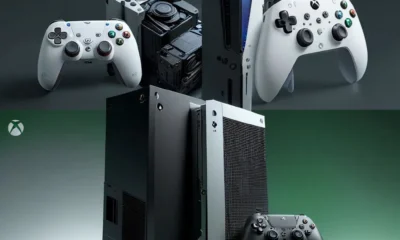
 Features2 weeks ago
Features2 weeks agoBest Cross-Platform Games for PC, PS5, Xbox, and Switch
-

 Game Reviews4 weeks ago
Game Reviews4 weeks agoHow Overcooked! 2 Made Ruining Friendships Fun
-

 Features3 weeks ago
Features3 weeks ago8 Video Games That Gradually Get Harder
-

 Game Reviews4 weeks ago
Game Reviews4 weeks agoHow Persona 5 Royal Critiques the Cult of Success
-
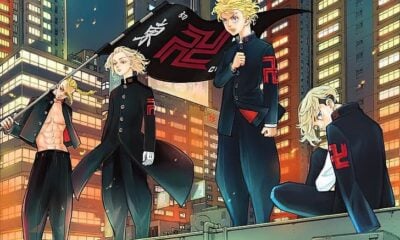
 Features2 weeks ago
Features2 weeks agoDon’t Miss This: Tokyo Revengers’ ‘Three Titans’ Arc Is What Fans Have Waited For!
-
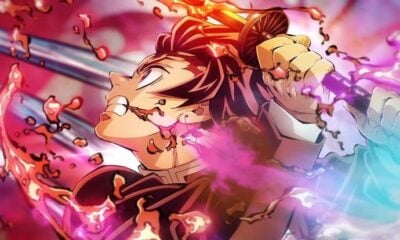
 Features1 week ago
Features1 week agoThe End Is Near! Demon Slayer’s Final Arc Trailer Hints at a Battle of Legends
-
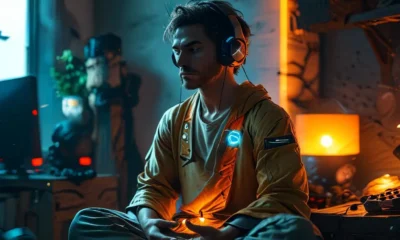
 Uncategorized3 weeks ago
Uncategorized3 weeks agoSleep Meditation Music: The Key to Unwinding
-
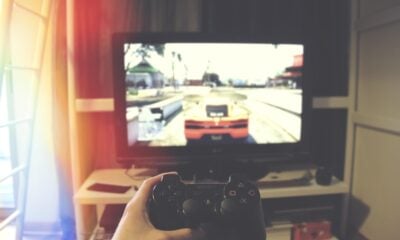
 Guides2 weeks ago
Guides2 weeks agoHow to buy games on Steam without a credit card
-
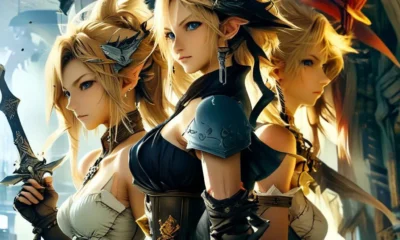
 Game Reviews2 weeks ago
Game Reviews2 weeks agoFinal Fantasy VII Rebirth Review: A Worthy Successor?























Phillip Redman
May 17, 2020 at 10:51 pm
This is not an example of good game design. Its aged poorly and it only gets a pass because it is a Zelda title or due to nostalgia.
Renan Fontes
May 18, 2020 at 7:39 am
Anyone who actually believes this needs to study up on game design.
William Eldridge
May 18, 2020 at 10:27 am
Anybody that believes you need to “study” to understand game design, needs to stop writing articles on the Internet. Some of the best games ever made were done by people with no formal education regarding game design and a lot of times no education on programming either. Stop acting like understanding games is like some elite club. Anybody can understand games, that is part of their appeal.
Ocarina of Time was hot garbage when it came out, it was hot garbage when it was remade, and it’s still hot garbage. It can’t hold a candle to the likes of Link to the Past and Link Between Worlds. Also…Marxism? Really? Please move to China so we don’t have to hear from you any more.
Renan Fontes
May 18, 2020 at 12:51 pm
Credit where credit is due, reading “Anybody can understand games, that is part of their appeal” only for you to immediately follow it up with “Ocarina of Time was hot garbage when it came out” is the most a comment has ever made me laugh.